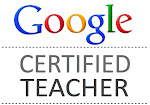By James, Shane F., and Sean
Thursday, we had Ms. C. from the Wildlife Experience program. She will be visiting us five times before school is out and will share animals from North America. This is a complement to our science unit on Animal Adaptations.

We learned that a fly has a compound eye. That means it sees many of the same images at one time. Above is a picture of a fly's compound eye.
They are difficult to swat because they really see you coming.
 Here is the turkey vulture, the only bird in North America that can smell. It can smell something two miles away. It eats dead things off the ground. If you look closely at its right wing, you will notice it is deformed. He was injured when he got hit by a car. Luckily, someone called the Wildlife Experience group and they saved him. Its predators are bobcats and red tailed hawks. Because he had a hurt wing, he could not fly away and a predator could have killed him and eaten him.
Here is the turkey vulture, the only bird in North America that can smell. It can smell something two miles away. It eats dead things off the ground. If you look closely at its right wing, you will notice it is deformed. He was injured when he got hit by a car. Luckily, someone called the Wildlife Experience group and they saved him. Its predators are bobcats and red tailed hawks. Because he had a hurt wing, he could not fly away and a predator could have killed him and eaten him.
The salamander is an amphibian that has holes on its body so it can breathe in water and on land. Interestingly enough, the salamander had tiger strips that were yellow and black. These beautiful stripes give it the name the tiger salamander. The tiger salamander had a long, lizard-like tail that the class got to stroke. The Wildlife Experience was fun and great for learning about animals from North America.
Have you ever seen these animals in the wild?
Do you know anything else about turkey vultures or salamanders?
If so, please comment!
Do you know anything else about turkey vultures or salamanders?
If so, please comment!

























































